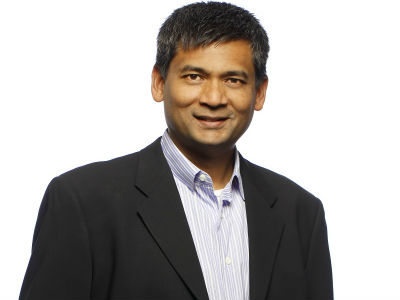Liberty Global Eyes Q4 for DOCSIS 3.1 Service Launch

DENVER -- Liberty Global plans to introduce DOCSIS 3.1-based services in Q4 of 2017, but the expectation is to target those services to higher-end customers due to the current high costs of D3.1-based consumer premises equipment.
Those CPE costs are still too high to justify a broader rollout, Balan Nair, Liberty Global’s SVP and CTO, said Tuesday here at Light Reading’s Next-Gen Technologies & Strategies conference in a discussion with independent analyst and Multichannel News contributor Leslie Ellis.
For now, Liberty Global’s “bull’s eye” broadband service, for the mass market, is at about 250 Mbps downstream, he said. He said Liberty Global’s D3.1-based offering will likely offer speeds of 500 Mbps to 750 Mbps that costs an additional 10 to 15 euros more per month.
He said Liberty Global is well down the path of having its network ready for D3.1, but the economics of the service will hinge on better CPE pricing.
Factoring into that equation is the need for integrated D3.1 gateways that also require advanced WiFi and other home networking technologies that rival that of the DOCSIS silicon residing in the device.
RELATED: DOCSIS 3.1 Grappling with Gateway Gap
Once those CPE economics improve, Nair said he could envision a “phase II” of the rollout that includes a wider deployment.
Multichannel Newsletter
The smarter way to stay on top of the multichannel video marketplace. Sign up below.
But Nair also talked up a major priority at Liberty Global that includes new construction in areas where the company is not overbuilding another cable company.
He said Liberty Global has built new networks passing north of 2 million homes passed in the past two years, has plans to build across another 1.7 million more this year in parts of Europe and Latin America, with another 2 million on deck for 2018.
“We are putting money where our mouth is,” Nair said, noting that these aren’t trivial projects given their need for the ramping up of engineering, vendor support and construction contractors to pull it off. “We are putting actual facilities in the ground.”
For those builds, Liberty Global is going with a mix of fiber-to-the-premises and fiber deep HFC networks that don’t put any amplifiers between the node and the home. The latter example, is also referred to as “node + 0.”
Nair also said Liberty Global is testing distributed access architectures that rely less on monolithic Converged Cable Access Platform chassis as electronics are moved closer to the edge of the network.
DAA is “not ready yet” but inching toward deployment, he said, adding that the operator will later look to add Remote PHY architectures.
Nair was also asked about Liberty Global’s embrace of OTT apps and services at the set-top box. He said Liberty Global has a “very good business relationship” with Netflix, which has already been integrated in set-tops in several Liberty Global service markets.
RELATED: Liberty Global: Netflix for All
He said Netflix has quickly become the top app on the MSO’s set-top box platform. In the Netherlands, for example, Netflix is followed by Videoland, another SVOD service, and YouTube.
Nair Netflix makes for a good partner because they can spend more on content. “They live on a different set of economics than we do.”
